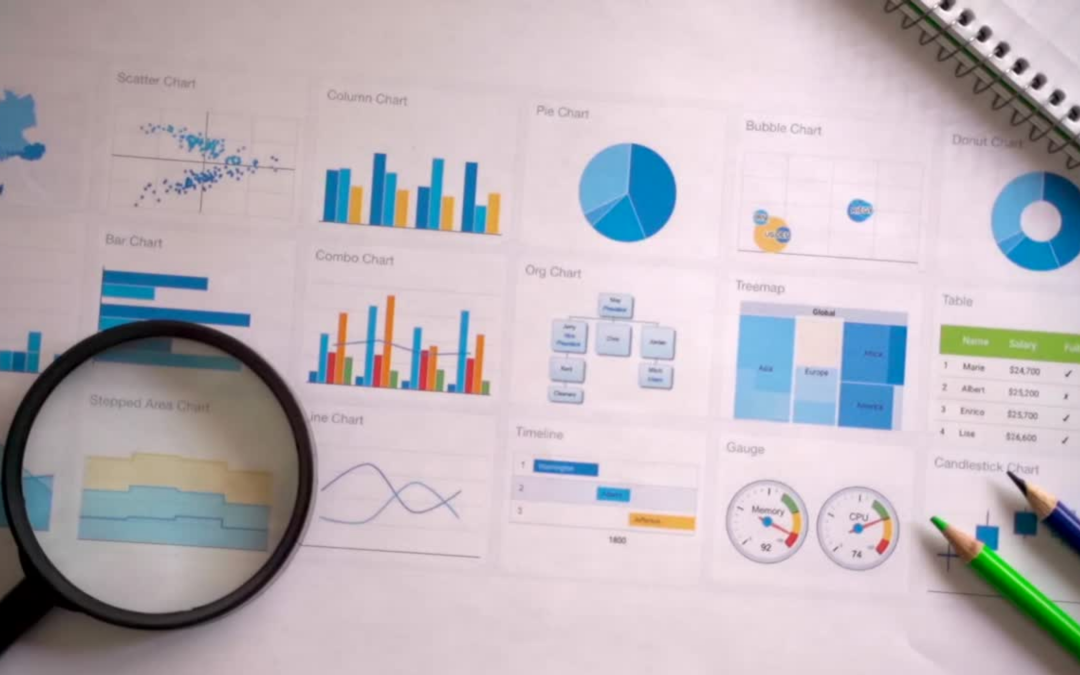Oil has sat atop the list of most valuable resources for centuries of human progress. However, a new resource has kicked oil to the curb and claimed its spot as king of the hill. That resource is data. When properly managed and used, data can provide insights that boost the profitability and efficiency of any business or organization. Today, data is essential in virtually all companies’ and organizations’ work.
With this in mind, we need to explore the differences between data analytics and business analytics. The two terms sound alike, and it is easy to mistake believing they are the same. However, there are distinct differences between the two that are worth exploring to gain key insights about which should be used, when, and why both are important to the successful development of any business or organization.
Table of Contents
What is Data Analytics?
What is Business Analytics?
What is the difference between Data and Business Analytics?
Key Takeaways
Data Analytics: The storytelling aspect of data
A data analyst is an individual whose job is to perform data analytics. Northeastern University describes its role in the following way:
A data analyst’s fundamental job is to tell compelling stories with data that empower organizational leaders to make better, more informed decisions.
When this work is done correctly, it can help cut through some technical jargon and parse complex data to tell a more compelling story about what the numbers mean. This is a beneficial service in that it helps make sense of all of the data that has been collected. Individuals in this field need to possess highly technical skills that they can use for their employers immediately.
It is estimated that somewhere between 60 and 73 percent of all data companies collect is wasted. These companies are spending the resources required to obtain the data, but they aren’t truly putting it to use because they don’t have enough people on staff to do this work for them. The world’s most valuable resource is slipping through its fingers like grains of sand.
This is yet another sign that companies need to pay greater attention to the resources they put into their data analytics departments. They may be sacrificing nearly three-quarters of their valuable data for no reason other than a lack of organization and manpower.
Skills required
Data analysts must possess technical skills that are not necessary for other roles. For example, a competent data analyst would have studied data analytics or taken a Tableau data analytics certificate to pick up these skills. Tableau is a standard data visualization software, and many companies prefer to have someone who knows how to use data software.
Other characteristics of a great data analyst include:
- Excellent attention to detail
- An ability to work independent
- Eyes for spotting details that are important to their organization
- Great communication skills
- The heart of a teacher to explain what all of the facts and figures mean
Companies rely on their data analysts to cut through the data they have obtained to show them what it all means. Someone who can do that is often highly prized within the organization that they work for.
Business Analytics: Data to make decisions
People who work as business analysts are interested in taking the information presented by a data analyst and putting it to practical use for the business. Knowing what the data says is one thing. Another is figuring out how to use the narrative the data has provided.
There are plenty of titles that companies bestow upon their business analysts, including:
- Operations Manager
- Data Analyst
- Strategic Operations Manager
- Data Consultant
- And more
The title itself is less important than the work that is performed. No matter their official title, someone in this arena will handle the massive quantities of data provided to them by the company to make wise decisions about operations moving forward. That said, it will eventually flow to the business analysts, who will use it to help make decisions about the direction of the company moving forward. Often, the data has already been filtered by data analysts within the company before the business analysts handle it.
Business analysts are handed a lot of trust by the companies they work for. Not only are they given access to potentially sensitive data, but they are asked to use that data in a way that will help the company thrive. At times, the decisions made by business analysts can prove very impactful on the success or failure of a company as it moves forward.
Solving the challenges that a company is currently facing and preparing it for the challenges that may come in the future are both aspects of what business analysts do.
It is more important now than ever before that businesses look at how they can use the data they collect to improve business. All this work is done carefully considering the data available to the business analyst. If that data is unavailable or is not carefully collected and stored, a business may find itself trying to make decisions based on faulty or inaccurate information.
Data Analytics vs. Business Analytics
When comparing data analytics and business analytics, it proves helpful to think about one coming before the other. Data analytics comes before business analytics in terms of when they are used.
The first part of the process is the collection of the data itself. Once that has been completed, data analysts get to work parsing out the potentially important pieces of information from the rest of the information. They filter and distill that information into a more manageable and digestible format. After that, they pass on their reports to business analysts to review.
The business analysts will look at what has been produced for them and make informed decisions about what it all means for the company’s future. They are looking for patterns and other information from within the data that may be useful for them to latch on to. They will attempt to use that information to create strategies for the future of the business that will serve it well. Their mission may seem simple, but they carry a lot of pressure on their backs in the form of high expectations and major risks if they fail.
Both processes are essential to a business’s development over time, and it is best when those businesses take the time to recognize the contributions that both data analysts and business analysts make to their operations. Without these individuals, the industry would throw away a large portion of the data it collects (just like many companies are doing now).
Key takeaways
When thinking about what data analytics and business analytics mean, it is essential to understand a few key things:
- They each serve each other – Just like the classic chicken and the egg question, data analytics and business analytics feed into one another. Having one without the other is impossible, and focusing on how they serve each other is essential.
- Different skill sets are necessary – There is no question that the skills one needs to succeed at data analytics differ from what one needs to do business analytics well. It is essential to consider the necessary skills before deciding which one may be right for you if you are looking for a career in either.
- Businesses rely on both – Company leadership should review how business analysts and data analysts can aid them in their quest to build a thriving business. Both job types must be used in a business. It is also important to make sure that enough of each kind of job is hired within an organization for it to be successful.
For more information on data analytics and its usefulness in modern business practices, visit Pathstream today.
Was this helpful?
Thanks! What made it helpful?
How could we improve this post?








